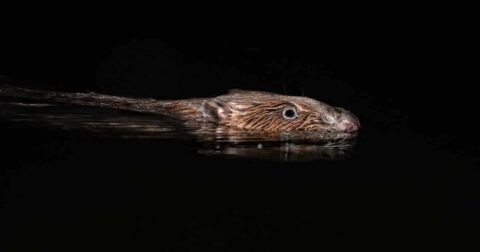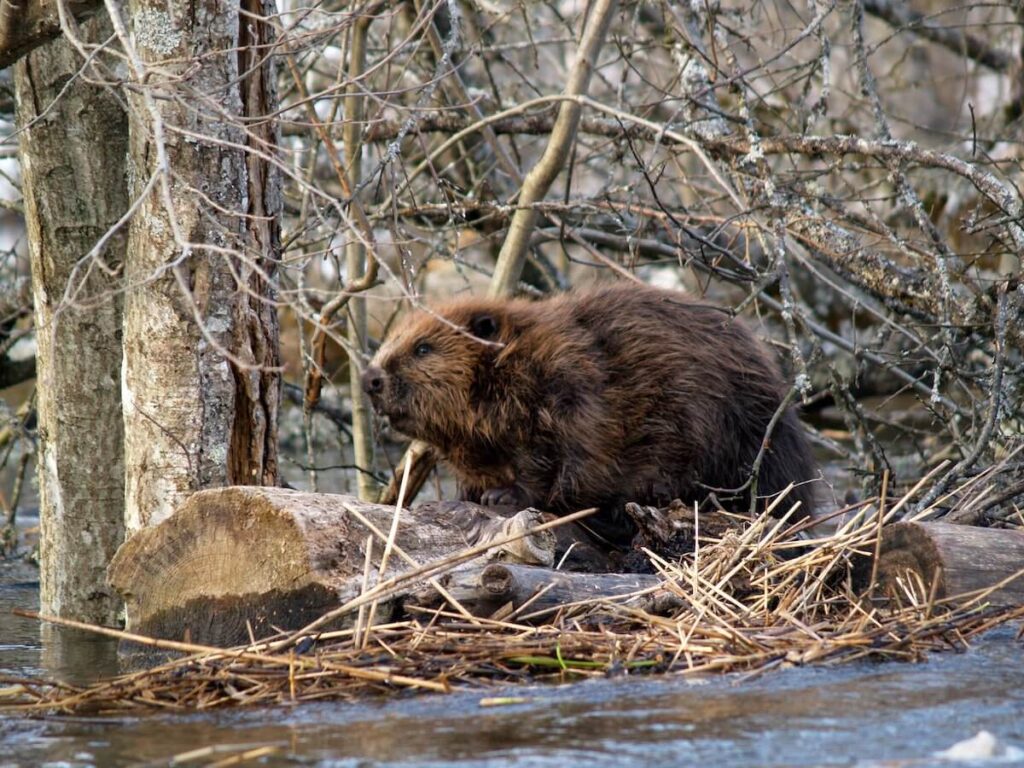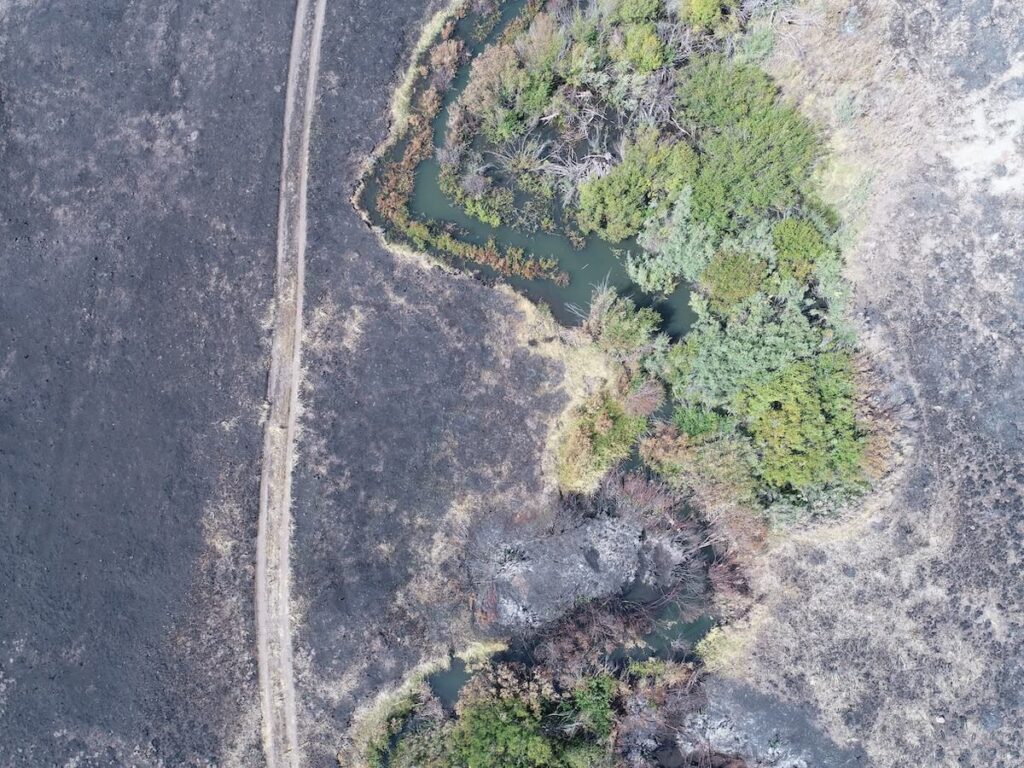Perspective
Can Men Help the Climate by Eating Less Meat?
Climate•5 min read
Perspective
For years, Scottish farmers saw the native beaver population as a menace. They learned it’s much easier to work with nature’s problem solvers than against them.


Words by Daniel Shailer
In May 2019, the Eurasian beaver was officially declared a native species in Scotland. Since then, over 200 have been killed. What’s more, each of those deaths was licensed by NatureScot, the official agency charged with “inspir[ing] everyone to care more” about Scottish wildlife. NatureScot was even one of the bodies which monitored the UK’s first official beaver reintroduction in 2009. At the end of that five-year trial, a partnership report declared it a “clear illustration” of success and a “template” for future projects, so why did the same agency go on to authorize a cull of what was at the time a fifth of Scotland’s beaver population?
It’s more important than ever to understand what can be learned from this “wholesale slaughter.” Last year the Department for Environment, Food & Rural Affairs (DEFRA) held an open consultation concerning “future releases into the wild […] into enclosures and existing wild-living beavers.” It’s clear from the wording of that consultation that future reintroductions are taken as a given. Instead, the consultation is expected to determine whether beavers will be reinstated as native species, where they will live, and how they will be managed.
To avoid another tragic slew of culls—and to fully understand what went wrong in Scotland—means going back to the very first wild beavers found north of the border in four centuries. A new, unexpected population of so-called “black-ops” beavers, unbeknownst to NatureScot, were discovered quietly paddling up the river Tay.
The idea of reintroducing beavers to Scotland—inspired at the time by successful releases in over 20 other European countries—was first floated in 1994. There was general concern about the impacts of an inherently disruptive animal, so it was agreed to research, survey, and plan what their effects might be.
So began fifteen years of acrimonious debate, costing over half a million pounds and eventually, painstakingly, settling on a small forest in the West Highlands for a trialed release of 11 beavers in 2009. Knapdale was chosen as a concession; anglers were concerned beavers would eat the salmon they fished, so Scottish Natural Heritage chose one of the few areas without salmon. So much effort was put into appeasing anglers that conservationists settled for an environment to which the beavers themselves were not suited. They promptly escaped, spread from the site, and have been chased down ever since.

The problem with the Knapdale compromise was that beavers only eat fish in Narnia. In reality, they are herbivores. For years before the Knapdale release, anglers argued to protect their stocks from a fiction while ecologists grew increasingly exasperated in their attempts to make progress. The situation was further complicated when separate sightings of a different, rogue beaver population on the River Tay began sometime in 2006.
It’s impossible to say whether these beavers would have been released without failing diplomacy prior to Knapdale, but it has been suggested by writers including Isabella Tree and George Monbiot that these beavers were not just accidental escapees from nearby Highland Wildlife Park. Whether planned by “vigilante” ecologists or not, the Tayside beavers and their dams flooded prime agricultural land in the area, and farmers raised the alarm. Unprepared for beavers in such numbers, there was at the time only one licensed trapper regularly relocating the animals. At a time when beavers had no legal protection and could be killed without a license, many were quietly shot.
More significantly for future projects, culling numbers in Scotland have created the perception that beavers are an uncontrollable menace; fears of a Beaver Planet have been a favorite can-kicking device of opponents ever since. In the wake of Tayside, the BBC described beavers as “feral,” the Farmers’ Union of Wales took to erroneously decrying beavers as disease-ridden, “non-native” pests, and social media continues to draw comparisons to invasive mink and castor canadensis: a different beaver species found in America.
In light of these fears and because England and Wales are more densely populated than Scotland, subsequent releases south of the border have focussed on enclosing beavers where they can, in theory, have the greatest ecological impact and cause the least destruction. Unlike Knapdale, which eventually saw beavers spread over more than 300 hectares, these releases have generally been fenced into four hectares or fewer.

Beavers are frequently compared to firefighters, engineers, and ecosystem architects, but they are also cunning escape artists. Ecologists at the Knepp Estate in Sussex were quickly thwarted by Bramber the beaver, who escaped in 12 days and traveled over 20 miles only to die from sepsis. A subsequent statement from Knepp read: “£45,000-worth of reinforced fencing and barriers […] were, unfortunately, not enough to deter Bramber and his mate from exploring.”
Enclosed trials in Knapdale and on the River Otter in Devon were, ultimately, successful in demonstrating the positive effects beavers have on the environment around them. Beavers are genetically hardwired to hide from predators by damming water and living safely in the deeper pools those dams create. In doing so, they force water into the area around the river and create lush, biodiverse wetland.
Wetlands are enormously effective carbon sinks and sequester that carbon far longer than mature forest. But beaver-created wetlands are even better. Because their dams slow down water, they effectively take the edge off agricultural fertilizer that leaches into the water: phosphates attach to sediment particles and sink the river bed, while one study found that wetland plants absorbed up to 45 percent of nitrates. Despite what many anglers still believe, studies have shown that beaver dams create more stable sediment for salmon to spawn in. In Oregon, studies showed one fish population doubling in just four years.
As well as treating the climate crisis at the source, beavers create buffers against freak weather events. While scientists forge away at flood mitigation technology, wetlands act like sponges to regulate water flow. Soaked as they are, wetlands also rebuff fire. There’s no clearer illustration of their effects than in the photographs that emerge after wildfires. Amidst entire reserves razed to barren, alien grey wastelands, beaver families and the wetlands they create blossom like miniature Edens. As flash floods and wildfires become increasingly real threats to the UK, beavers are an ally worth enlisting—and they work for free.

In light of the many trials of the past, and taking tips from over twenty other European countries with thriving beaver populations, a clear package for responsible beaver reintroductions has emerged. One element involves mapping both the vegetation beavers feed on and the streams they are likely to dam in order to model where they might stray from an unenclosed release sight, and even how quickly. Conservationists can assess where disruption might occur and proactively mitigate those effects: either with modifications or reimbursements.
Employing “beaver consultants” is another sensible measure. In Bavaria, Germany, over 1,000 beaver consultants have stewarded beaver releases and helped them to co-exist with landowners and communities.
Native species status—one expected result of DEFRA’s consultation—hasn’t been enough to protect the species in Scotland, but taken with sophisticated, proactive modeling and a network of local officers, the future is open for wide-scale, unenclosed reintroductions. Some of these changes are underway already: Natural England put out a job ad for a National Beaver Officer in December and modeling of beaver movements is currently being implemented for releases on the south coast of Dorset. Paying farmers to make space for beavers on their land is another option on the table.
Ultimately, the most effective engagement might just be letting beavers get on with it. After vehement opposition from anglers in Bavaria, local experts now describe a peaceful symbiosis. “The reality,” says pioneering ecologist Gerhard Schwab, “of living with [beavers] has changed their minds.”
With the right measures and a positive outcome from DEFRA’s consultation, there is every chance we will soon see fences taken down and beavers allowed to roam free. This time, unjustifiably large culls and fears of an uncontrollable beaver takeover will hopefully prove a thing of the past. Beavers offer such a meaningful piece of our global carbon and biodiversity puzzle, we owe them that much.